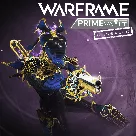Warframe: Prime Vault - Nova Prime Accessories
Official Description (Ad Blurb)
INSTANTLY UNLOCK PRIME ACCESSORIES AND DISCOUNTED PLATINUM!
The Prime Vault is now open! For a limited time, you can purchase this pack and gain instant access to Vaulted Prime Accessories and more! Get them before they retire and return to the Vault!
Pack Includes:
- 200 Platinum
- Edo Prime Armor Set: This golden decorative armor honors master warriors long since forgotten
- Velorum Prime Sigil: Champions of the Orokin were allowed to wear this Sigil as proof of their loyalty
1 player
Network Players 2-4
1MB minimum save size
DUALSHOCK®4 Vibration Function
Remote Play Supported
HD Video Output 720p,1080i,1080p
Download of this product is subject to the PlayStation Network Terms of Service and our Software Usage Terms plus any specific additional conditions applying to this product. If you do not wish to accept these terms, do not download this product. See Terms of Service for more important information.
One-time licence fee to download to multiple PS4 systems. Sign in to PlayStation Network is not required to use this on your primary PS4, but is required for use on other PS4 systems.
See Health Warnings for important health information before using this product.
Source: PlayStation Store Description
Groups +
Analytics
Identifiers +
Contribute
Are you familiar with this game? Help document and preserve this entry in video game history! If your contribution is approved, you will earn points and be credited as a contributor.
Contributors to this Entry
Game added by Charly2.0.
Game added January 3, 2019. Last modified April 21, 2024.












